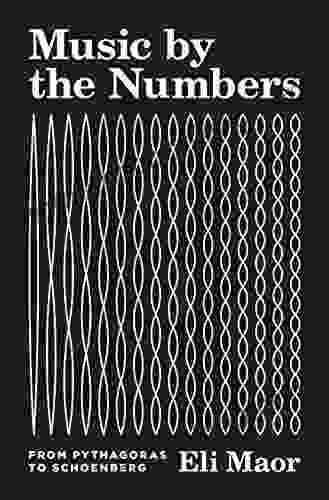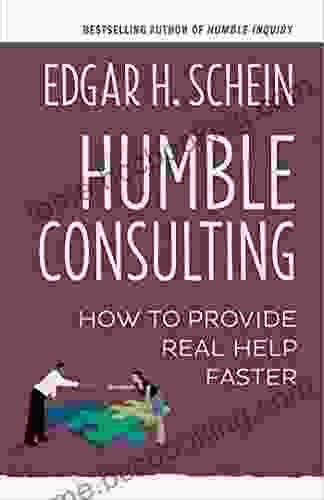Music by the Numbers: From Pythagoras to Schoenberg

Music and mathematics have been intertwined since the earliest days of human civilization. The ancient Greeks, in particular, were fascinated by the mathematical properties of music, and they developed a number of theories about how music could be used to represent mathematical relationships.
4.3 out of 5
| Language | : | English |
| File size | : | 8394 KB |
| Screen Reader | : | Supported |
| Print length | : | 176 pages |
One of the most famous of these theories is the Pythagorean scale, which is based on the mathematical ratios of the intervals between the notes of the scale. The Pythagorean scale is still used today in many Western musical instruments, such as the piano and the guitar.
In the centuries that followed, mathematicians and musicians continued to explore the relationship between music and mathematics. In the 16th century, the Italian mathematician Girolamo Cardano developed a new method for tuning musical instruments, which was based on the mathematical properties of the overtone series. In the 17th century, the German mathematician Marin Mersenne published a treatise on the mathematical foundations of music, which included a number of new theories about the relationship between music and mathematics.
In the 19th century, the German mathematician Hermann von Helmholtz published a groundbreaking treatise on the mathematical foundations of music, which laid the foundations for the modern understanding of the relationship between music and mathematics. Helmholtz's work was based on the mathematical properties of the ear, and he developed a number of new theories about how the ear perceives music.
In the 20th century, the Austrian mathematician Arnold Schoenberg developed a new system of music theory, which was based on the mathematical properties of the twelve-tone scale. Schoenberg's system of music theory is still used today by many composers, and it has had a profound influence on the development of modern music.
The relationship between music and mathematics is a complex and fascinating one. Music by the Numbers provides a comprehensive overview of this rich and complex subject, making it an essential resource for anyone interested in the intersection of music and science.
Table of Contents
- Chapter 1: The Ancient Greeks and the Mathematical Foundations of Music
- Chapter 2: The Middle Ages and the Renaissance: The Development of New Musical Theories
- Chapter 3: The 17th and 18th Centuries: The Scientific Revolution and the Birth of Modern Music Theory
- Chapter 4: The 19th and 20th Centuries: The Development of New Mathematical Theories of Music
Chapter 1: The Ancient Greeks and the Mathematical Foundations of Music
The ancient Greeks were the first to develop a systematic understanding of the relationship between music and mathematics. They believed that music was a mathematical science, and they developed a number of theories about how music could be used to represent mathematical relationships.
One of the most famous of these theories is the Pythagorean scale, which is based on the mathematical ratios of the intervals between the notes of the scale. The Pythagorean scale is still used today in many Western musical instruments, such as the piano and the guitar.
The ancient Greeks also developed a number of other mathematical theories about music, including theories about the relationship between music and harmony, and theories about the relationship between music and rhythm.
Chapter 2: The Middle Ages and the Renaissance: The Development of New Musical Theories
During the Middle Ages and the Renaissance, a number of new musical theories were developed. These theories were based on the mathematical foundations of music that had been established by the ancient Greeks, but they also incorporated new ideas from other fields, such as astronomy and philosophy.
One of the most important musical theorists of the Middle Ages was Guido of Arezzo. Guido developed a new system of musical notation, which made it easier to read and write music. He also developed a new method for teaching music, which was based on the mathematical properties of the scale.
During the Renaissance, a number of new musical instruments were developed, such as the violin and the harpsichord. These new instruments allowed composers to explore new musical possibilities, and they also led to the development of new musical theories.
Chapter 3: The 17th and 18th Centuries: The Scientific Revolution and the Birth of Modern Music Theory
The Scientific Revolution of the 17th and 18th centuries had a profound impact on the development of music theory. Scientists began to apply the methods of the scientific method to the study of music, and this led to the development of new theories about the relationship between music and mathematics.
One of the most important scientific discoveries of the 17th century was the discovery of the overtone series. The overtone series is a series of frequencies that are produced when a musical instrument is played. The overtone series is based on the mathematical properties of the instrument, and it can be used to explain the intervals between the notes of the scale.
The discovery of the overtone series led to the development of new theories about the relationship between music and harmony. These theories were based on the mathematical properties of the overtone series, and they provided a new understanding of the principles of musical harmony.
Chapter 4: The 19th and 20th Centuries: The Development of New Mathematical Theories of Music
The 19th and 20th centuries saw the development of a number of new mathematical theories of music. These theories were based on the mathematical foundations of music that had been established by the ancient Greeks and the scientists of the Scientific Revolution, but they also incorporated new ideas from other fields, such as psychology and computer science.
One of the most important mathematical theories of music of the 19th century was the theory of musical set theory. Musical set theory is a branch of mathematics that studies the mathematical properties of musical sets, which are collections of musical objects, such as notes, intervals, and chords.
In the 20th century, a number of new mathematical theories of music were developed, including information theory, cybernetics, and artificial intelligence. These theories were used to develop new ways of understanding the relationship between music and mathematics, and they also led to the development of new musical instruments and compositions.
The relationship between music and mathematics is a complex and fascinating one. Music by the Numbers provides a comprehensive overview of this rich and complex subject, making it an essential resource for anyone interested in the intersection of music and science.
4.3 out of 5
| Language | : | English |
| File size | : | 8394 KB |
| Screen Reader | : | Supported |
| Print length | : | 176 pages |
Do you want to contribute by writing guest posts on this blog?
Please contact us and send us a resume of previous articles that you have written.
 Book
Book Novel
Novel Page
Page Chapter
Chapter Text
Text Story
Story Genre
Genre Reader
Reader Library
Library Paperback
Paperback E-book
E-book Magazine
Magazine Newspaper
Newspaper Paragraph
Paragraph Sentence
Sentence Bookmark
Bookmark Shelf
Shelf Glossary
Glossary Bibliography
Bibliography Foreword
Foreword Preface
Preface Synopsis
Synopsis Annotation
Annotation Footnote
Footnote Manuscript
Manuscript Scroll
Scroll Codex
Codex Tome
Tome Bestseller
Bestseller Classics
Classics Library card
Library card Narrative
Narrative Biography
Biography Autobiography
Autobiography Memoir
Memoir Reference
Reference Encyclopedia
Encyclopedia Elisabeth Winkler
Elisabeth Winkler Elizabeth E Wein
Elizabeth E Wein Ed Mylett
Ed Mylett John Berendt
John Berendt Eadweard Muybridge
Eadweard Muybridge Sandhya Rani Jha
Sandhya Rani Jha Eliot Schrefer
Eliot Schrefer Earl B Mcelfresh
Earl B Mcelfresh Thomas Deetjen
Thomas Deetjen Eamon Evans
Eamon Evans John Pearson
John Pearson Edward C Klatt
Edward C Klatt Eleanor Shipley Duckett
Eleanor Shipley Duckett Elizabeth Monson
Elizabeth Monson Ellen O Connell Whittet
Ellen O Connell Whittet Jenna Gottlieb
Jenna Gottlieb Earnest N Bracey
Earnest N Bracey Elin Hilderbrand
Elin Hilderbrand Eliza Watson
Eliza Watson Elizabeth Leane
Elizabeth Leane
Light bulbAdvertise smarter! Our strategic ad space ensures maximum exposure. Reserve your spot today!
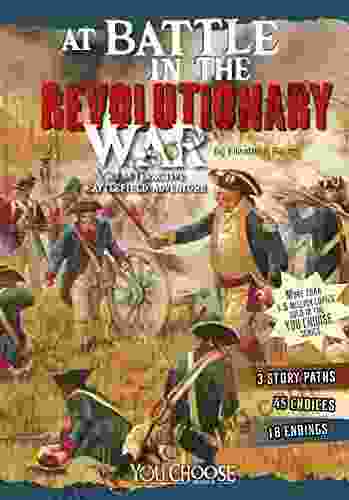
 Herman MelvilleAt Battle In The Revolutionary War: A Captivating Journey Through America's...
Herman MelvilleAt Battle In The Revolutionary War: A Captivating Journey Through America's... Lawrence BellFollow ·10.3k
Lawrence BellFollow ·10.3k Harvey BellFollow ·11.7k
Harvey BellFollow ·11.7k Wade CoxFollow ·10k
Wade CoxFollow ·10k Isaac BellFollow ·17.5k
Isaac BellFollow ·17.5k August HayesFollow ·12.8k
August HayesFollow ·12.8k Jace MitchellFollow ·3.2k
Jace MitchellFollow ·3.2k Eric NelsonFollow ·19.7k
Eric NelsonFollow ·19.7k Christian BarnesFollow ·7.5k
Christian BarnesFollow ·7.5k
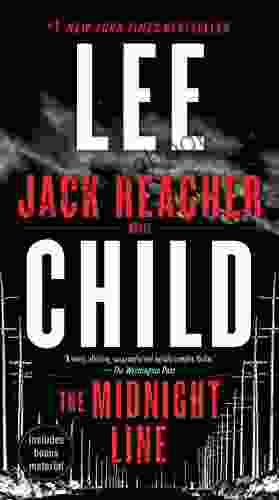
 Clarence Brooks
Clarence BrooksUncover the Secrets in the Dead of Night: Dive into Lee...
Step into the heart-stopping world of Jack...
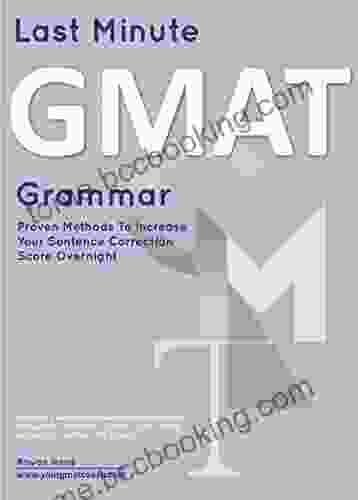
 Clay Powell
Clay PowellAce the GMAT Grammar Section: Your Last-Minute...
The GMAT is a challenging...

 Salman Rushdie
Salman RushdieEmbark on a Heartwarming Journey with "The All Together...
: Immerse yourself in the charming world of...
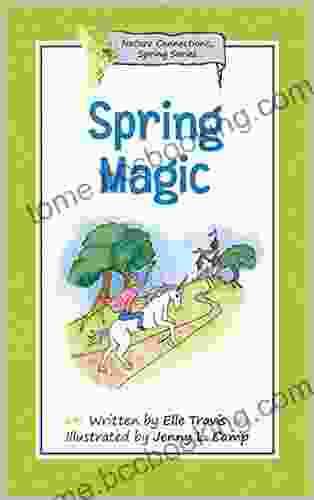
 Dawson Reed
Dawson ReedSpring Magic: Stunningly Illustrated Fun for Kids to...
Welcome to the Enchanting World of...
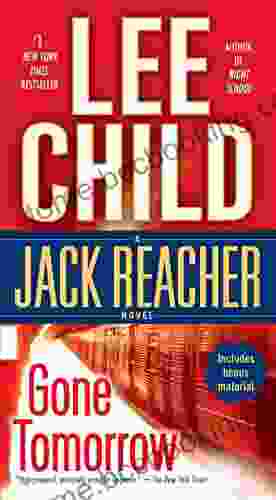
 Bradley Dixon
Bradley DixonGone Tomorrow: A Gripping Thriller by Lee Child that Will...
In the literary realm of thrillers, few...
4.3 out of 5
| Language | : | English |
| File size | : | 8394 KB |
| Screen Reader | : | Supported |
| Print length | : | 176 pages |


